Understories is an exploration of things visible mostly to the inner eye and memory, things below the surface. The book began as a riff on Mark Strand’s brilliant title, “Planet of the Lost Things,” and it is an exploration of loss, but also of recovery through memory and language. The first part, “A Perfect Afternoon” follows an unfulfilled romance through significant moments and years to elegy for what never was and for the loved one himself. The romance is juxtaposed with epiphanic moments of reflection, joy and dismay, perceptive growth points. The second section, “Functional Families,” considers the theme of family, especially mothers, and moves through varying visions of family to a sort of resolution though the poet’s mothering of her own son. The third section, “Going the Distance for Poetry,” focuses on poetry and art, some of the connections that make the poetic quest possible, literary, artistic and natural (looking at mountains, listening to trees). The final section, “Lost Cities,” looks at New York, Toronto, Florence, ancient Rome, Mayan Mexico through the lens of history and memory, alternating sorrow for loss with belief in the power of poetry to preserve. Once of the themes of Understories is “where does the story end?” and the book takes the long view, writing beyond the apparent ending.
Forms: a lot of elegy. This is a book where ghosts walk. Ekphrastic poetry. Some nature poetry. Michael Crummey says he tends to write mostly story poetry. There are a lot of stories in this book.The poet condenses years into a few lines.
Formal forms: free verse with a little prose poetry (very little).

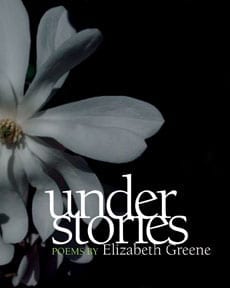
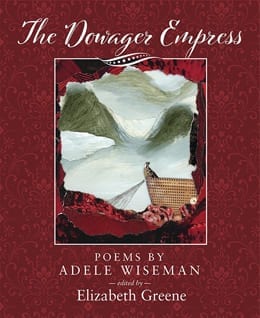
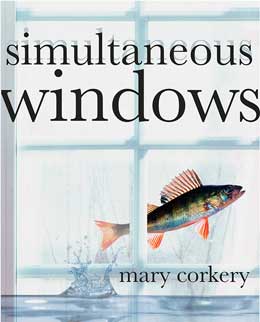
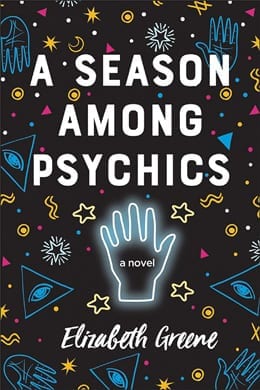
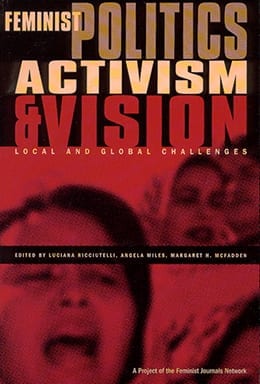
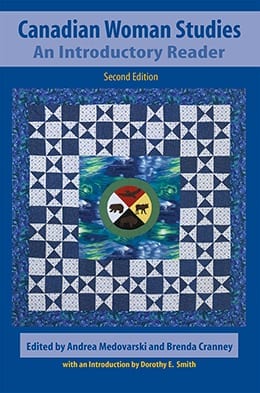
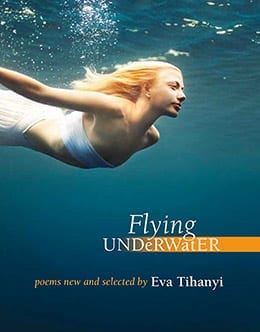
InannaWebmaster –
A Story is a Legacy: Elizabeth Greene’s Understories
Reviewed by Tiffany Moniz, Arc Poetry Magazine – February 19, 2015
http://arcpoetry.ca/?p=8646
In this four-part collection, Greene cleverly resurfaces stories and memories to explore loss, healing and the preservation of legacies through the power of the poetic form. In “One Perfect Afternoon,” Greene invites us to experience a momentous but unsuccessful romance by asking us to imagine a love that is tangible but unreachable at the same time. Just as one poem alludes to a cosmic romance (“You took my hand. / Energies of the universe / flowed over us, / wind blew round us”), another underscores that relationship’s fleeting nature by recollecting “All those years of silence, distance, absence.” These cycles of memory and lamentation reflect on the past as a path to healing and closure.
The book’s second section explores familial relationships. The most powerful poems here navigate the speaker’s tensions with a mother who “wasn’t mean–critical– / passed on a pot of self-doubt / so black I’m still scrubbing.” By revisiting the role that criticism and illness played in her relationship with her mother, and by reflecting on her own, very different, relationship with her son, the speaker maturely acknowledges that familial relationships take on many forms. In “Time Travel,” the speaker must “travel through those layers of years, / take my past selves by the hand and bring them finally, home” and reconcile with her past in a manner that nurtures the absences she has felt in her own family.
The third part, “Going the Distance for Poetry,” is not only a tribute to powerful art and poetry but contemplates how to enter a meaningful, poetic journey. The speakers in this section struggle to find inspiration and meaning in the poetic pursuit, as in “Leaving Chile,” when the speaker asks, “How will we find poems / in the midst of dailiness?” These poems affirm that poetic inspiration comes from everywhere and provides an avenue to use one’s voice, but only practicing this craft by “turning sand into pearl / over and over / makes the artist.”
As the collection draws to a close, Greene brings her themes full circle. Here, the loss of a marriage, friends and a mother is juxtaposed with places and poetic works of art that seemingly last forever, though the nostalgic connection to such things changes. Places hold stories and memories: “These streets embrace us / their stones full of stories,” but it is through revisiting and re-engaging with their own memories that the speakers are able to reconcile loss with the legacy stories provide. Greene’s collection reminds us that such legacies are created and sustained by the unfolding and sharing of histories.
InannaWebmaster –
The understory of Elizabeth Greene
By Merilyn Simonds, Kingston Whig-Standard – June 10, 2014
http://www.thewhig.com/2014/06/10/the-understory-of-elizabeth-greene?fb_action_ids=10152026857631910&fb_action_types=og.recommends
What kind of poet is Elizabeth Greene?
“Eclectic,” she says. “I aspire to write the sort of poetry that readers will find comforting in a fever.”
She laughs her small, trademark laugh, caught somewhere between a giggle and a harrumph. At first it sounds girlish, until you hear the undertones, ironic and sharp. Not a girl at all; a wise woman observing, not fooled by anything.
You have to listen closely to Elizabeth Greene, whether stopped on the street or between the covers of her books. If you don’t, you might miss something, and you’d be the poorer for it.
Elizabeth’s splendid new collection, Understories, begins with a testament:
What I Like About Poetry
It says, I prefer not to.
It doesn’t persuade, exhort,
encourage, scold, or ask for
money. It doesn’t say, YOU can help.
It doesn’t tell you to lose weight,
try botox or Viagra. It doesn’t say
have a good day.
Prickly, seductive, lyric, abrasive,
there’s the poem. Read it or not,
like it or not, it shrugs, persists.
It doesn’t promise white teeth or
true love. You can enter or you can
walk away.
The poems go on to tell what some might call the back story, but I like Elizabeth’s term better. Understories. Not the forest seen from a distance, the grand, tall trees of the canopy. What she is interested in is the bracken, the fallen logs and the beetles creeping underneath, last year’s leaf mulch. All the living, dying matter that feeds the parts we notice first.
In these poems, she spends little time on the forest, much on the hidden reaches under the trees. In “One Perfect Afternoon” a woman whom others deem lonely recalls a single afternoon that has nurtured her for years. In “Splitting the Moment” a woman opens the door to let her cats in and glances up at the sky. A mundane moment, easily dismissed, except that this is the dawn after a great Leonid meteorite shower, which she missed, too fearful to go out in the dark to watch the stars fall.
Understories is Elizabeth Greene’s third collection of poems, preceded by Iron Shoes (2007) and Moving (2010). Her first collection came out, not coincidentally, the year she retired from a long career teaching in the Department of English at Queen’s.
“Every psychic I went to, and I’ve gone to more than one,“ she laughs, “told me my writing would never happen until I gave up my job.”
Elizabeth started writing in public school, continued through high school and university at Bryn Mawr, a highly selective women’s liberal arts college near Philadelphia. She was writing stories then. As a graduate student at the University of Toronto, she helped start a literary magazine that published young, up-and-coming writers such as Gary Geddes, Margaret Avison, Dennis Lee and Margaret Atwood, who at the time was a grad student at Harvard.
In 1967-8, she published a few of her own stories in Catalyst. She expected to go from stories to novels to a career as a fiction writer. Instead, teaching intervened.
In 1969, Elizabeth was hired as one of the first women in the Queen’s Department of English, which at the time included George Whalley, Tom Marshall and David Helwig. She quickly became Assistant Professor, teaching English to undergrads until 1998.
That’s the canopy. Deep in the understory, Elizabeth was busy changing the face of English at Queen’s. She was one of two originating co-ordinators of the first multi-disciplinary Women’s Studies course at Queen’s and designed and taught courses in Selected Women Writers, Contemporary Women Writers and Sylvia Plath. She was also instrumental in the introduction of Creative Writing into the curriculum.
“I had to fight for it. I went to the head of the department and he said no one would want to take it. I gathered a group of undergraduates (including Kingston’s current poet laureate Eric Folsom) and we met every couple of weeks for a year, until I could assure the department head that there really was a desire for creative writing at Queen’s. There were a couple of false starts, then Bronwen Wallace, who was part of a multidisciplinary course in Women’s Studies, took on the creative writing and gave it a real presence.
“I got pretty good at knowing the drill. Before the campaign for Women’s Studies, we collected 800 signatures on a bulky petition, and when the administration said, ‘No one is interested in Women’s Studies,’ I pulled out the petition and let it unfold.
Her own writing, meanwhile, was buried deep in the forest duff. She published fiction sporadically in the Whig Standard magazine, Quarry magazine, Descant, Room of One’s Own, Queen’s Feminist Review.
In 1990, she began to take workshops, first in fiction, then in poetry, at Sage Hill and Banff, with writers such as Jane Urquhart, Rachel Wyatt and Tim Lillburn. She participated in two New Poems workshops with American poet Sharon Olds.
“You had to apply with three poems. I’d been working with a wonderful writing group, so I had three poems, and I got in. The workshop was amazing, very sheltered: she gave you permission to write your material, encouraged you to take risks.”
She also travelled to Chile to work with Barry Dempster, and booked herself into St. Peter’s Abbey in Saskatchewan for writing retreats in 2012 and 2013.
She writes about that time in “Going the Distance for Poetry.”
“Why do I have to go so far to write a poem?” she asks early in the poem, answering herself in the final lines: “It’s easy to awaken here.”
Suddenly, on Elizabeth’s CV, there is a great flowering: poems, essays, and memoirs published in Double Lives, Dropped Threads, and First Writes. She edited We Who Can Fly: Poems, Essays and Memories in Honour of Adele Wiseman and Kingston Poets’ Gallery.
Three collections later, Elizabeth sees herself clearly as a poet. That said, she is about to return to fiction. She has been accepted by the Humber School of Writing to work on her novel with Helen Humphreys, who has been her mentor for many years.
“I don’t think I would have turned the manuscripts into books without her,” Elizabeth says simply.
The final poem in this collection, “Touched by History,” tells the story of Irene Nemirovsky, who was arrested by Nazis and died in Auschwitz before finishing her memoir, Suite Francaise. The last line sums up the value of the deadfall, the worth of art itself.
“After disaster, legacy.”
Merilyn Simonds is the author of The Paradise Project.
—————————
“A layered, compelling collection that maps genealogies and tenuous, emerging flocks of selves. At once lyric and storied, Greene’s poems celebrate discovering community and living a poetic life with the cards we are dealt. Thank goodness Greene has, in her fine poetry, dared to disturb the universe.”
— Jeanette Lynes, author of Archive of the Undressed
InannaWebmaster –
“Four Books Gifted to Me on Tour: Hunter, Meyer, Jaffe and Greene” – May 27, 2014
reviewed by Catherine Owen, Marrow Review
http://blackcrow2.wordpress.com/
What Shines: Overall, Greene has written a beautiful book (including the petalled cover) that smoothly fuses details of her life from her son’s birth to her dying mother to the vanishing vistas of aging, with allusions to the texts she has read and taught over the years from Eliot and Euripedes to Olds and Plath, and to places she has traveled through like Florence, or lived in like New York. As with the best of Frank O’Hara, Greene is able, much of the time, to make us care about the people who inhabit her poems, from Arthur, who grew gardens of “apples and quince, roses and hosta” to trans-gendered Terry who came out as a woman “at 79…[and] wore swishy dresses, lime green or ice blue, with frilly necks.” The book begins with a bang. What I like about Poetry sketches a poetics in which the poem is ambivalent in its potency, giving the reader the freedom to “enter…or…walk away.” Pregnancy and its effect on familial dynamics is explored in poems like Raindrops Lounging on Magnolia Buds; Heaven in Bits engages with aging and its recollections from a museum in Santiago where the speaker witnesses, “pots the red-brown of eclipse”; Last Week enters Sylvia Plath’s death, and Planet of the Lost Things traces fleeting neighbourhoods: “I’m still turning corners to failed coffee shops/dreaming egg and anchovy sandwiches”. These poems sing with the sense of a full life, including its bitternesses, its unfulfillments.
What Stumbles: Greene sometimes has difficulty ending a poem, concluding with a platitude such as “that’s the best I can do with what I’ve got,” or the cliche that it’s “turning sand into pearl/over and over/makes the artist” or the grandiose statement: “Dark ages end; justice returns./After disaster, legacy.” Her openings almost always lure one in though with their confident placement of philosophical or temporal invitation: “I thought miracles were supposed to be easy” or “Thirty-three years later I regret.” Again, maudlin subject matter is risked, and mostly, effectively tilted towards the transcendent.